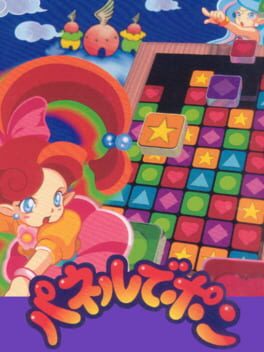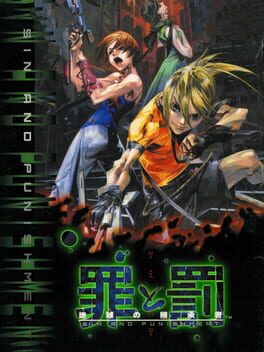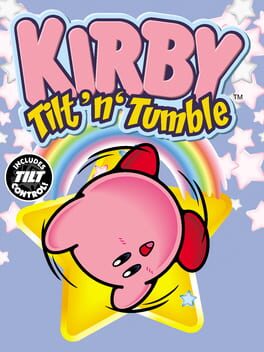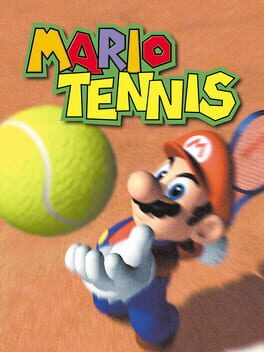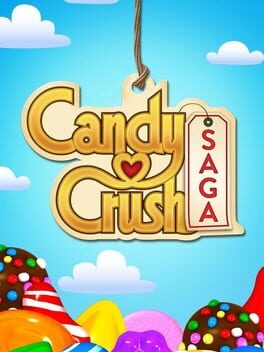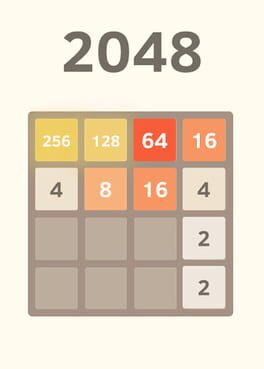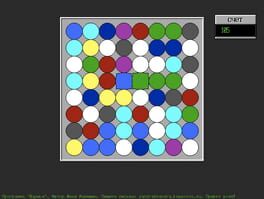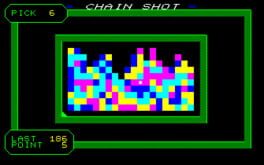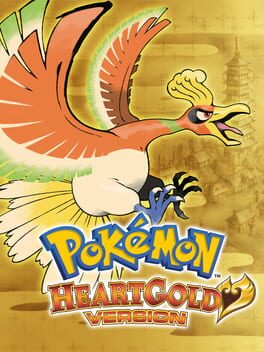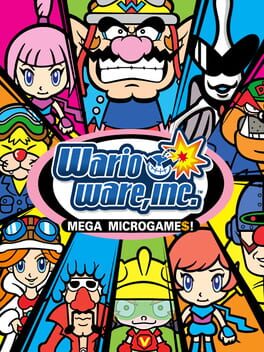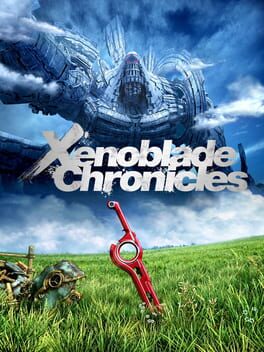1995
2000
Absolutely baffled by this
Aesthetically Amazing, strongly inspired by late 90s Seinen Anime like Lain and Evangelion, but also by some classics like Gundam, Akira and Macross. The diegesis is convoluted and abstract, but i enjoy the frantic pace and the way they built the scenes. This game is a great example of usage of cinematics in favour of a videogame, with the cinematic frames actually being a gameplay part itself, and is so carefully built. I like the open nature of the narrative too.
Ludic-wise, the gameplay is very in depth, with both a varied number of options and also differing patterns of enemies and levels. What amazes me is how many different activities the game require you to do, you are never doing the same thing twice.
The game can be REALLY challenging, and its arcade nature allows a lot of skill-based replayability.
OST and scenarios are both killers too.
The control scheme can be a little bit counter-intuitive at times though.
Aesthetically Amazing, strongly inspired by late 90s Seinen Anime like Lain and Evangelion, but also by some classics like Gundam, Akira and Macross. The diegesis is convoluted and abstract, but i enjoy the frantic pace and the way they built the scenes. This game is a great example of usage of cinematics in favour of a videogame, with the cinematic frames actually being a gameplay part itself, and is so carefully built. I like the open nature of the narrative too.
Ludic-wise, the gameplay is very in depth, with both a varied number of options and also differing patterns of enemies and levels. What amazes me is how many different activities the game require you to do, you are never doing the same thing twice.
The game can be REALLY challenging, and its arcade nature allows a lot of skill-based replayability.
OST and scenarios are both killers too.
The control scheme can be a little bit counter-intuitive at times though.
One of the rare cases where the obvious tech demo for the accelerometer try actually to build a game instead of being a mere showcase. The idea of doing each level with a unique concept like Mario (and funnily enough, unlike Kirby platformers) is neat! But their choice of going for the most frustrating and punishing level design they could think make the game a chore (what is really like 90s Kirby games!). Sometimes the game also prefer the weird tech instead of the better design options. Particularly the jump, which is not functionable at all.
I'm glad that this exist but is a very passable game
I'm glad that this exist but is a very passable game
2000
I was honestly baffled by this
I went expecting cheap fun, but this is a great experience all around
The gameplay is polished and have some deegree of technicality, the characters play out a little different, large roster and each different court actually plays different. Also one of the earliest mario sport stuff. The game also have multiple unique game modes.
I think this is underapreciated for being a sports game that is not a simulator, but the game genuinely got me engaged. And there's a lot of challenging and understanding to be have here. Solid all around
I went expecting cheap fun, but this is a great experience all around
The gameplay is polished and have some deegree of technicality, the characters play out a little different, large roster and each different court actually plays different. Also one of the earliest mario sport stuff. The game also have multiple unique game modes.
I think this is underapreciated for being a sports game that is not a simulator, but the game genuinely got me engaged. And there's a lot of challenging and understanding to be have here. Solid all around
2012
The game could've been interested. The Panel de Pon puzzle mode move limit applied to Bejeweld. They already did this with Bubble Witch Saga witch was a Puzzle Bobble with move limit. The move limit is a cool idea and could work. The problem is that this whole game is a scam. There's little strategy, most of the game play by itself and is random, which mean there's excessive dopamine with explosive little effects and also that you can't consistently win. When i win i don't felt is my fault, neither when i loose. Is just a dopamine fest.
2014
This game have some strategy and fooling around, i got a little bit over 300k, is very dynamic. But after you discover the optimal strategy it just became a repetition chain. Good stuff to wind up your mind and just stack heavy points. I'll give more than 6/10 because the process of discovery of the better strategies is really rewarding and fun!
1994
This game have a vision and create a blueprint. Is just, it is it... the game don't utilize the swaping mechanic to its fullest, there's no progression, strategy is limited and is not very dynamic. Extremely influential but games as Panel de Pon and later Bejeweld will do this concept in a much better fashion
1985
1997
I wrote a bigger piece with more detailed info. on what i think about this game here: https://medium.com/@criticalinputs3/final-fantasy-vii-1997-review-b3904f4c5f62
But this is a great game. One of the best diegetics i've seen in a game, both in script but also in the way they develop the narrative through in-game elements. The battle system is extensive and provide interesting tools. My gripes with this one came with two things: Poor Information Delivery (particularly visual information) and the Structure of the Overworld
But this is a great game. One of the best diegetics i've seen in a game, both in script but also in the way they develop the narrative through in-game elements. The battle system is extensive and provide interesting tools. My gripes with this one came with two things: Poor Information Delivery (particularly visual information) and the Structure of the Overworld
The only reason to why there's so much praise for this game is nostalgia. And i don't mean it neither in the salty nor in the bad spirited way. I just really can't see otherwise. And it is fair, this was my first pokemon back in the day (specifically Soul Silver, but i've replayed recently in Heart Gold), so i do have tons of nostalgia for this one, but is just impossible to ignore the blatant flaws on these games, even with the emotional attachment to them.
And to be fair, SS/HG are great remakes, is just that Pokemon Gold and Silver weren't very good pokemons to begin with. This is good remake in the sense is infinitely better than the original, but the original was not good, so this is just ok.
The good parts are obvious: this game looks gorgeous, the post game is way more fun to play, with increased time and some adjustements, battle frontier, the new Safari Zone is probably the best the series ever had and the mechanical adds introduced in gen 4 such as better balancement, depth in move pool and physical/special split made this game way way better. Also, since most of the broken systems and mechanics that existed in the two first gens were wiped away in 3rd gen this game is much more polished and functionable when compared to the originals. There are Pokemons that are simply not good to play in the original games, like Heracross for instance, that now worth playing with, and some of the evolutions added in 4th gen also make some lines like in the case of Mamoswine and Weavile, way more interesting. The game also heavily remakes some dungeons layouts and some Gym puzzles, with most of them if not all ending up a little bit more complicated and interesting when compared to its original game.
This game also have an AI better than most pokemon (particularly when compared with the 6th gen onwards, Ultra Sun/Ultra Moon being an exception)
Now the cons...
The most obvious and blatant one, the awful level curve. The early game requires some grinding, than from the 2nd gym to the 7th you just will be overleveled, and then the 8th gym will require grinding but now a ton of it and then the Pokemon League have also an considerable level spike and another for the pokemon champions (that one is manageable w/o grinding tho) and then another level spike before Kanto. This level curve is just insanity, and makes playing through game feeling like a chore. This was the one thing they DESPERATELY HAD to change in the remake, and simply adding adjustable levels for the gyms would already made it way way better. The whole idea of doing gyms in your prefered order is cool, but would need a better implementation and probably a massive rearragenement of the game's general progression.
Most dungeons in this game are wildly awful battle wise (even if now they are reasonable layout wise), with you playing the same matchup again and again. And pretty much every one of them are caves, with the noticeable exception of Sprout Tower and the the Bell Tower if you're playing Heart Gold. And in Sprout Tower case you will just play the same matchup of Bellsprout for a dozen of times in a row.
The rocket team is just confusing and messy. Goes from nowhere to nowhere and sincerely, just didn't need to be there.
The rival is just ok, one of the weaker of the franchise, and everything interesting to him can only be seen in an special event that you can only see if you got Celebi, a pokemon that you can only got in special limited events.
The gyms also drastically varies in quality, with some like Whitney, being great and others like Morty and Chuck not having any Johto pokemons, while also not being particularly memorable.
This is also the pokemon i've played with most bullshit. The quantity of times the enemy hits critical exactly when it needs to, or when you receive two criticals in a row is wild.
The games don't help itself much with going towards some of the most annoying tactics just to create cheap difficulty. Yeah, i've beaten Lt. Surge, Koga and Karen with ease, but it was extra annoying when most of their pokemon were based around evasiveness, and it wasn't satisfying to press magnitude 16x with my Donphan instead of pressing 3 or 4.
This game is overall an ok game, is a good remake, but it could've been so much more. I get the nostalgia for it, the Nintendo DS was also an console that my personality is indistinguishable from, but we have to come at ease with the reality that this game is not that good, and is way easier since Pokemon in Nintendo DS have some of the best in the franchise to fullfill that sentiment.
And to be fair, SS/HG are great remakes, is just that Pokemon Gold and Silver weren't very good pokemons to begin with. This is good remake in the sense is infinitely better than the original, but the original was not good, so this is just ok.
The good parts are obvious: this game looks gorgeous, the post game is way more fun to play, with increased time and some adjustements, battle frontier, the new Safari Zone is probably the best the series ever had and the mechanical adds introduced in gen 4 such as better balancement, depth in move pool and physical/special split made this game way way better. Also, since most of the broken systems and mechanics that existed in the two first gens were wiped away in 3rd gen this game is much more polished and functionable when compared to the originals. There are Pokemons that are simply not good to play in the original games, like Heracross for instance, that now worth playing with, and some of the evolutions added in 4th gen also make some lines like in the case of Mamoswine and Weavile, way more interesting. The game also heavily remakes some dungeons layouts and some Gym puzzles, with most of them if not all ending up a little bit more complicated and interesting when compared to its original game.
This game also have an AI better than most pokemon (particularly when compared with the 6th gen onwards, Ultra Sun/Ultra Moon being an exception)
Now the cons...
The most obvious and blatant one, the awful level curve. The early game requires some grinding, than from the 2nd gym to the 7th you just will be overleveled, and then the 8th gym will require grinding but now a ton of it and then the Pokemon League have also an considerable level spike and another for the pokemon champions (that one is manageable w/o grinding tho) and then another level spike before Kanto. This level curve is just insanity, and makes playing through game feeling like a chore. This was the one thing they DESPERATELY HAD to change in the remake, and simply adding adjustable levels for the gyms would already made it way way better. The whole idea of doing gyms in your prefered order is cool, but would need a better implementation and probably a massive rearragenement of the game's general progression.
Most dungeons in this game are wildly awful battle wise (even if now they are reasonable layout wise), with you playing the same matchup again and again. And pretty much every one of them are caves, with the noticeable exception of Sprout Tower and the the Bell Tower if you're playing Heart Gold. And in Sprout Tower case you will just play the same matchup of Bellsprout for a dozen of times in a row.
The rocket team is just confusing and messy. Goes from nowhere to nowhere and sincerely, just didn't need to be there.
The rival is just ok, one of the weaker of the franchise, and everything interesting to him can only be seen in an special event that you can only see if you got Celebi, a pokemon that you can only got in special limited events.
The gyms also drastically varies in quality, with some like Whitney, being great and others like Morty and Chuck not having any Johto pokemons, while also not being particularly memorable.
This is also the pokemon i've played with most bullshit. The quantity of times the enemy hits critical exactly when it needs to, or when you receive two criticals in a row is wild.
The games don't help itself much with going towards some of the most annoying tactics just to create cheap difficulty. Yeah, i've beaten Lt. Surge, Koga and Karen with ease, but it was extra annoying when most of their pokemon were based around evasiveness, and it wasn't satisfying to press magnitude 16x with my Donphan instead of pressing 3 or 4.
This game is overall an ok game, is a good remake, but it could've been so much more. I get the nostalgia for it, the Nintendo DS was also an console that my personality is indistinguishable from, but we have to come at ease with the reality that this game is not that good, and is way easier since Pokemon in Nintendo DS have some of the best in the franchise to fullfill that sentiment.
Why pretty much every single bad review of this game is just people complaining that BotW is not an game that it isn't trying to be?
What Makes BotW an outstanding game, even when compared with its now stellar sequence, is that is an nearly consistent and complete set of systems that interact with each other in an enticing way, providing, to the core design loop of the game, the chain of exploration, an strong ground to operate with.
Every single system in this game (most of them, operating in an consistent way), have an meaningful purpose to be here, and is well crafted to help and to be helped by the other systems. Is an structural game, is the most strict sense of "structural". In which every element is solidary with all the other elements, and the whole of the game compose an totality as an piece of art that feels coherent.
I think most criticisms towards this game, fails to recognize what the game is striving to do: put you in an constant chain of small interactions within its outstandingly designed world, in a way that smalls chunks of your attention leads to endless exploration. Combined with the large number of systems and tools that allow you to experiment and try different things in order to solve the challenges, and helps even further these small interactions.
The frequent criticisms could be comprised of
1- The Lack of an Linear Storytelling
2- Not deep developed Side Missions
3- Simplicity of Combat System
4- Lack of Variety in Enemies
5- Lack of Urgency
6- Easy Puzzles
7- Too Many Korok Seeds and Shrines
8- Weapon Breaking System
9- Lack of Reward for Exploration
My answers would be
1- I think people tends to understand wrongly what means to have an good story in videogame, while acritically pushing an model of "good story" that oftens come from either Cinema or Literature, and, while suiting well its original media (although it have some examples where this model don't work well, but this can't be discussed here), is completely arbitrary when applied towards videogames and ignore the particularities of the media in which its circunscribed and the game intentions. A "good story" in videogames is one that better fit the game in its systems. People often think in linear progression, character arc development, text heavy dialogues, drama focused narratives and complex thematization as good story, and while this serve wells some games (Most JRPGs and Naughty Dog Games for instance), for other, it would be a desservice. A good example is how disjointed some recent Rockstar and Ubisoft games feel, with its linear main campaign feeling akin and alienating the game itself (i looking at you Far Cry). BotW presents its short story in the most proper way i could possibly think to this game. It ties the story to exploration itself. To find the memories you have to explore the world and partake in the chain of interactions, giving more depth to the stables and relying on the game's different notable landmarks. The rest is told you by either enviromental storytelling (an overlooked aspect of narratives in videogames, that BotW excels in doing) or by bits of interactions in its open world.
2- Side Missions in BotW are not meant to be parallel plots. Some games strive to do so, and i like it. The Witcher 3, Fallout: New Vegas and Vampire the Masquerade: Bloodlines, being prime examples of well developed parallel storylines. Here, side missions operate as pieces of the open world, that integrate the rupee economy system of the game (that is an scarce asset in this game) or leading you into more bits of exploration. All of this leads you back, more or less indirectly, to the focal point of the game: the chain of exploration. Bigger side missions with more narrative development could work (although risking feeling akin to the game and too distracting from the core), but the lack of it don't hinder the quality of this piece.
3- BotW is not a combat focused game. If we try to compare to other great open world games, such as Elden Ring and Xenoblade Chronicles, we miss the main difference of BotW with most Action Oriented Open World games. If most of them, are Action Games, that use exploration as an auxiliary way of improving the fun of its fight system, BotW is an exploration game that uses combat to enhance its exploration, being the action parts auxiliary to the exploration. Drawing influences from 90s Immersive Sims (and ultimately being an immersive sim), one of the key tenants of the game is the idea that the fighting is ONE of the many possibilities when dealing with enemies, not THE MAIN possibility. An intricated combat system, that allowed Link to do all sort of crazy stuff would hinder a lot the incentive to use the wide variety of options the game provide to you. You have heavy Attack, Block, Dodge, Parry and Flurry Rush. Flurry Rush have the downbreak of quickly breaking your weapon and is not as op as it was in Wind Waker, so is perfectly fine as it is.
4- This feels weird to me. First, because as i stated, is not a combat focused game. The fun of BotW don't come with facing unique enemies like in Xenoblade or Elden Ring. The enemies, functionally speaking, presents a challenge, that you should ought to solve with your tools. Also, because there are some variety here. You have 21 possible threats, not counting the main campaign bosses, the elemental varieties (that, because of the consistent systems of the game, effectively affect the way you interact with them) and of course, the different colours of the levels. And this considering that the encounter with the foe always depend on the weapon he's utilizing, and this itself, give an enormoug depth to the action moments of the game. Since each enemy acts differently depending on the weapon it's using, even if it don't varies deeply from a design standpoint, but is diverse in a mechanical standpoint.
5- Every action in this game is tied with the main goal of defeating Ganon and saving Zelda. Since you start exceptionally weak, all the exploration you are doing feels meaningful as you get stronger and have more cards to use against ganon. The Shrines give you hearts and stamina, the enemy camps give you weapons, the korok seeds give you weapon stache, the side quests give you rupees that allows you to acquire armor and fighting and exploration situations lend you with materials that allow you to upgrade these armor. Everything makes you more suited to fight ganon and leads you to fight with ganon.
6- This is not a puzzle heavy game, and it can't, for the most part, be one. The thing with hard to solve puzzles or complex dungeons with a lot of easy interconnected puzzles that are hard to solve in the grand schemes of things (the way old Zelda games operated), is that they are 1. Long 2. Slow. This can definitely work out, how it worked in older Zelda titles, but they were games that had an really slow pace, that saw you often stalled thinking and wandering to find the solutions. Introducing this kind of approach to the shrines here would have the game's pace to fall apart. The idea of shrines and koroks is to offer a quick challenge, that helps the exploration loop to have some interesting things to do, while not being a detour of the loop itself. If everytime you got into a shrine you spent an hour in the shrine, instead of 5 minutes, the game would quickly transform itself into a slugfest. I can see them doing, in the future, 3 or 4 big dungeons in the game to appeal to old school fans, and it could work, but is not a necessary element of this new Zelda design approach.
7- BotW is not a game meant to be 100% played. Not only BotW, Shigeru Miyamoto openly expressed that 3D Mario games are not meant to be fully beaten but played untill you thought you had enough. They clearly not designed BotW with Completionism in mind, but once again, with the chain of exploration in mind. And the overbearing amount of shrines and korok helps to provide the enough links (no pun intended) to this chain. You always will have some interesting thing to look while roaming in the map. If their quantity wasn't overbearing we would end up with holes in the the game's main loop.
8- The most polemic point of the game. And i'll go direct on point: just as some people disliked the mandatory saves in Darkest Dungeon, people hate weapon breaking in BotW not because is bad but because is frustrating. And thank god it is.
The weapon breaking is not only good, but one of the key tenets of the game, completely quintessential to the game experience as it is.
For multiple reasons
First, because it obligate you to actually consider not using solely weapons in combat, but to think outside the box, and engage with the wide variety of possibilities to defeat your enemies without the need of direct engagement, something that the 90s Immersive Sims such as "System Shock" (1994) and "Thief" (1998) strived towards.
Second, because it doesn't kill the incetive to explore to keep finding weapons. If you have an 35 attack weapon, it doesn't make an 23 attack weapon obsolete.
Third, because it obliges you to use an myriad of different weapons, to understand well their usages and how they connect with the multiple possible interactions that you can have with them and how to take advantage of them while in combat.
Fourth and the most important, because it integrates the combat with the exploration. I think an annedocte of me playing BotW could help elucidate this. For the first 10 hours of the game, that weapon breaking system frustrated me. When i reached Hateno village, the first village i found in the game, i was hoping to find an weapon shop there, as it usually have in most games, because i was almost dry out of weapons. But there's wan't any weapon shop, and i got confused and in fear that i would not be able to get more good weapons. Then, i had an epiphany. I had to actually explore and engage with the world to have an constant influx of weapon. Permanent weapons would eventually desincentivize me to A: Engage with some enemy camps and B: Roam around and find out new things about the world. The weapon breaking system is amazing and helps to integrate these elements in a superb way.
9- I think this criticism
A: Fails to See how the Exploration-Reward operate in BotW
B: Fails to understand why the exploration is so fun in BotW
In A, because the game operate with small bits of exploration for small rewards. You got korok seeds, weapon, armor, materials, Spirit Orbs etc., that don't look, individually, like an big deal, like would be with an hyper badass weapon or some cool stuff, but rather, give you small things that help you further advance little by little, exploring little by little. In general, the reward is proportional to the task, and if you go the labyrinths, you get cool armor. But in general if you gave big reward for exploring, the game's economy would break.
In B, Because the exploration in BotW strives to be intrinssecally fun. You shouldn't explore because you will be rewarded, but because is fun. The rewards exist to tie in the progression with the game main loop, that feeds back the main loop once again and then you have an progressive circle of development in the game. Sure, not everybody will feel compelled to have intrinsic motivation for exploration, but, for instance, i'm not compelled to see intrinsic motivation to play stealthy in videogames as some people, but this doesn't mean that Metal Gear Solid, Thief II or some Splinter Cell games are not really well crafted stealth games because i am not particularly leaned towards it. Is hard to deny how well crafted Breath of the Wild open world gameplay is, just as is really hard to deny how well crafted Metal Gear Solid 3 stealth gameplay is, even if its not the most appealing thing to you. We should strive to understand a piece of art in its own terms.
I think i generally talked why i liked the game and answered some criticisms that the game often suffer. I won't say some corny stuff like "the game isn't perfect" as some sort of discoursive diplomacy to someone who disagrees with me feel less confronted. If you disagree with me, is fine and i don't think you actually have to like this game, although i'll defend in rational grounds why i think this game is as a piece of art an good piece of art, and also, because this is trivial, of course is not perfect, because no game is "pefect", i don't think "perfection" is useful at all to think about videogames, and to be honest, art in general. And if there is something as perfection in art, it is as mere Ideal of Art, not as something an factual art could be, just something we strive towards, not something we can actually achieve. I think, the relevant discourse on this game should be that it is a really well crafted game, that develop and presents its ideas in an interesting an coherent way.
I didn't wrote about it at the time i played it, because to be fair, everything that had to be said about this game, was already said. A trillion video essays about BotW were made in youtube. I can't think many games that were as analyzed as this one. But the recent release of Tears of the Kingdom made me want to write about this game, partially because i ended up reading this criticisms again, years after i've read them, and also because writing about BotW helped me make sense of my experience with TotK, and to further think about the new game, and also videogames in general. I would also say Breath of the Wild is one of my favorite games (it is listed, as of today, in my "favorite games" section of the backloggd), and i could write about it way more, but i think this summarize and organize some of important general thoughts i put into this game. Zelda is my favorite franchise i am delighted to envision a bright future for the franchise, even if its aparted from the approach that made me fall in love with Zelda games in the first place.
What Makes BotW an outstanding game, even when compared with its now stellar sequence, is that is an nearly consistent and complete set of systems that interact with each other in an enticing way, providing, to the core design loop of the game, the chain of exploration, an strong ground to operate with.
Every single system in this game (most of them, operating in an consistent way), have an meaningful purpose to be here, and is well crafted to help and to be helped by the other systems. Is an structural game, is the most strict sense of "structural". In which every element is solidary with all the other elements, and the whole of the game compose an totality as an piece of art that feels coherent.
I think most criticisms towards this game, fails to recognize what the game is striving to do: put you in an constant chain of small interactions within its outstandingly designed world, in a way that smalls chunks of your attention leads to endless exploration. Combined with the large number of systems and tools that allow you to experiment and try different things in order to solve the challenges, and helps even further these small interactions.
The frequent criticisms could be comprised of
1- The Lack of an Linear Storytelling
2- Not deep developed Side Missions
3- Simplicity of Combat System
4- Lack of Variety in Enemies
5- Lack of Urgency
6- Easy Puzzles
7- Too Many Korok Seeds and Shrines
8- Weapon Breaking System
9- Lack of Reward for Exploration
My answers would be
1- I think people tends to understand wrongly what means to have an good story in videogame, while acritically pushing an model of "good story" that oftens come from either Cinema or Literature, and, while suiting well its original media (although it have some examples where this model don't work well, but this can't be discussed here), is completely arbitrary when applied towards videogames and ignore the particularities of the media in which its circunscribed and the game intentions. A "good story" in videogames is one that better fit the game in its systems. People often think in linear progression, character arc development, text heavy dialogues, drama focused narratives and complex thematization as good story, and while this serve wells some games (Most JRPGs and Naughty Dog Games for instance), for other, it would be a desservice. A good example is how disjointed some recent Rockstar and Ubisoft games feel, with its linear main campaign feeling akin and alienating the game itself (i looking at you Far Cry). BotW presents its short story in the most proper way i could possibly think to this game. It ties the story to exploration itself. To find the memories you have to explore the world and partake in the chain of interactions, giving more depth to the stables and relying on the game's different notable landmarks. The rest is told you by either enviromental storytelling (an overlooked aspect of narratives in videogames, that BotW excels in doing) or by bits of interactions in its open world.
2- Side Missions in BotW are not meant to be parallel plots. Some games strive to do so, and i like it. The Witcher 3, Fallout: New Vegas and Vampire the Masquerade: Bloodlines, being prime examples of well developed parallel storylines. Here, side missions operate as pieces of the open world, that integrate the rupee economy system of the game (that is an scarce asset in this game) or leading you into more bits of exploration. All of this leads you back, more or less indirectly, to the focal point of the game: the chain of exploration. Bigger side missions with more narrative development could work (although risking feeling akin to the game and too distracting from the core), but the lack of it don't hinder the quality of this piece.
3- BotW is not a combat focused game. If we try to compare to other great open world games, such as Elden Ring and Xenoblade Chronicles, we miss the main difference of BotW with most Action Oriented Open World games. If most of them, are Action Games, that use exploration as an auxiliary way of improving the fun of its fight system, BotW is an exploration game that uses combat to enhance its exploration, being the action parts auxiliary to the exploration. Drawing influences from 90s Immersive Sims (and ultimately being an immersive sim), one of the key tenants of the game is the idea that the fighting is ONE of the many possibilities when dealing with enemies, not THE MAIN possibility. An intricated combat system, that allowed Link to do all sort of crazy stuff would hinder a lot the incentive to use the wide variety of options the game provide to you. You have heavy Attack, Block, Dodge, Parry and Flurry Rush. Flurry Rush have the downbreak of quickly breaking your weapon and is not as op as it was in Wind Waker, so is perfectly fine as it is.
4- This feels weird to me. First, because as i stated, is not a combat focused game. The fun of BotW don't come with facing unique enemies like in Xenoblade or Elden Ring. The enemies, functionally speaking, presents a challenge, that you should ought to solve with your tools. Also, because there are some variety here. You have 21 possible threats, not counting the main campaign bosses, the elemental varieties (that, because of the consistent systems of the game, effectively affect the way you interact with them) and of course, the different colours of the levels. And this considering that the encounter with the foe always depend on the weapon he's utilizing, and this itself, give an enormoug depth to the action moments of the game. Since each enemy acts differently depending on the weapon it's using, even if it don't varies deeply from a design standpoint, but is diverse in a mechanical standpoint.
5- Every action in this game is tied with the main goal of defeating Ganon and saving Zelda. Since you start exceptionally weak, all the exploration you are doing feels meaningful as you get stronger and have more cards to use against ganon. The Shrines give you hearts and stamina, the enemy camps give you weapons, the korok seeds give you weapon stache, the side quests give you rupees that allows you to acquire armor and fighting and exploration situations lend you with materials that allow you to upgrade these armor. Everything makes you more suited to fight ganon and leads you to fight with ganon.
6- This is not a puzzle heavy game, and it can't, for the most part, be one. The thing with hard to solve puzzles or complex dungeons with a lot of easy interconnected puzzles that are hard to solve in the grand schemes of things (the way old Zelda games operated), is that they are 1. Long 2. Slow. This can definitely work out, how it worked in older Zelda titles, but they were games that had an really slow pace, that saw you often stalled thinking and wandering to find the solutions. Introducing this kind of approach to the shrines here would have the game's pace to fall apart. The idea of shrines and koroks is to offer a quick challenge, that helps the exploration loop to have some interesting things to do, while not being a detour of the loop itself. If everytime you got into a shrine you spent an hour in the shrine, instead of 5 minutes, the game would quickly transform itself into a slugfest. I can see them doing, in the future, 3 or 4 big dungeons in the game to appeal to old school fans, and it could work, but is not a necessary element of this new Zelda design approach.
7- BotW is not a game meant to be 100% played. Not only BotW, Shigeru Miyamoto openly expressed that 3D Mario games are not meant to be fully beaten but played untill you thought you had enough. They clearly not designed BotW with Completionism in mind, but once again, with the chain of exploration in mind. And the overbearing amount of shrines and korok helps to provide the enough links (no pun intended) to this chain. You always will have some interesting thing to look while roaming in the map. If their quantity wasn't overbearing we would end up with holes in the the game's main loop.
8- The most polemic point of the game. And i'll go direct on point: just as some people disliked the mandatory saves in Darkest Dungeon, people hate weapon breaking in BotW not because is bad but because is frustrating. And thank god it is.
The weapon breaking is not only good, but one of the key tenets of the game, completely quintessential to the game experience as it is.
For multiple reasons
First, because it obligate you to actually consider not using solely weapons in combat, but to think outside the box, and engage with the wide variety of possibilities to defeat your enemies without the need of direct engagement, something that the 90s Immersive Sims such as "System Shock" (1994) and "Thief" (1998) strived towards.
Second, because it doesn't kill the incetive to explore to keep finding weapons. If you have an 35 attack weapon, it doesn't make an 23 attack weapon obsolete.
Third, because it obliges you to use an myriad of different weapons, to understand well their usages and how they connect with the multiple possible interactions that you can have with them and how to take advantage of them while in combat.
Fourth and the most important, because it integrates the combat with the exploration. I think an annedocte of me playing BotW could help elucidate this. For the first 10 hours of the game, that weapon breaking system frustrated me. When i reached Hateno village, the first village i found in the game, i was hoping to find an weapon shop there, as it usually have in most games, because i was almost dry out of weapons. But there's wan't any weapon shop, and i got confused and in fear that i would not be able to get more good weapons. Then, i had an epiphany. I had to actually explore and engage with the world to have an constant influx of weapon. Permanent weapons would eventually desincentivize me to A: Engage with some enemy camps and B: Roam around and find out new things about the world. The weapon breaking system is amazing and helps to integrate these elements in a superb way.
9- I think this criticism
A: Fails to See how the Exploration-Reward operate in BotW
B: Fails to understand why the exploration is so fun in BotW
In A, because the game operate with small bits of exploration for small rewards. You got korok seeds, weapon, armor, materials, Spirit Orbs etc., that don't look, individually, like an big deal, like would be with an hyper badass weapon or some cool stuff, but rather, give you small things that help you further advance little by little, exploring little by little. In general, the reward is proportional to the task, and if you go the labyrinths, you get cool armor. But in general if you gave big reward for exploring, the game's economy would break.
In B, Because the exploration in BotW strives to be intrinssecally fun. You shouldn't explore because you will be rewarded, but because is fun. The rewards exist to tie in the progression with the game main loop, that feeds back the main loop once again and then you have an progressive circle of development in the game. Sure, not everybody will feel compelled to have intrinsic motivation for exploration, but, for instance, i'm not compelled to see intrinsic motivation to play stealthy in videogames as some people, but this doesn't mean that Metal Gear Solid, Thief II or some Splinter Cell games are not really well crafted stealth games because i am not particularly leaned towards it. Is hard to deny how well crafted Breath of the Wild open world gameplay is, just as is really hard to deny how well crafted Metal Gear Solid 3 stealth gameplay is, even if its not the most appealing thing to you. We should strive to understand a piece of art in its own terms.
I think i generally talked why i liked the game and answered some criticisms that the game often suffer. I won't say some corny stuff like "the game isn't perfect" as some sort of discoursive diplomacy to someone who disagrees with me feel less confronted. If you disagree with me, is fine and i don't think you actually have to like this game, although i'll defend in rational grounds why i think this game is as a piece of art an good piece of art, and also, because this is trivial, of course is not perfect, because no game is "pefect", i don't think "perfection" is useful at all to think about videogames, and to be honest, art in general. And if there is something as perfection in art, it is as mere Ideal of Art, not as something an factual art could be, just something we strive towards, not something we can actually achieve. I think, the relevant discourse on this game should be that it is a really well crafted game, that develop and presents its ideas in an interesting an coherent way.
I didn't wrote about it at the time i played it, because to be fair, everything that had to be said about this game, was already said. A trillion video essays about BotW were made in youtube. I can't think many games that were as analyzed as this one. But the recent release of Tears of the Kingdom made me want to write about this game, partially because i ended up reading this criticisms again, years after i've read them, and also because writing about BotW helped me make sense of my experience with TotK, and to further think about the new game, and also videogames in general. I would also say Breath of the Wild is one of my favorite games (it is listed, as of today, in my "favorite games" section of the backloggd), and i could write about it way more, but i think this summarize and organize some of important general thoughts i put into this game. Zelda is my favorite franchise i am delighted to envision a bright future for the franchise, even if its aparted from the approach that made me fall in love with Zelda games in the first place.
2010
1994
I have conflicting opinions about this game inside me.
I grew up with this game, it made part of my childhood, although i am younger than this game. And the pure joy of playing this one lives in my memory. To replay it was for sure weird.
For an side, this game does a lot of stuff right. The presentation is superb, the graphics are very good, amazing art style, the game have a ton of personality, all the characters have top tier design and are super charismatic, the ost is amazing, the animations are really cool and the levels are all really beautiful. And the level concepts are abismal. It is weird how Nintendo gave an company that had nothing to do with Nintendo an important character and they were able to put up an game that is so good at being an Nintendo game. They catch up with the way Nintendo delivers platformers since "Super Mario Bros. 3" (1988), where each level have one simple concept that they fully develop through that specifical level, than they move on to another concept, making the game overflow with cool ideas and never endings challenges that feel fresh and new. The payoff is clear, as long as you can overcome the challenge, you need to put up dozens and dozens of cool ideas for levels. And well, at that part Rare just killed it. Pretty much every single level concept is cool, and they are for the most part different from each other, with pretty much no repetition (this game is really short tho). The level concepts are superb, and some of the most creative i've seen in an platformer. The animals you can ride give variety to the game and are really fun, the collectibles do give depth to the game levels, and the way they handle bananas, statues, lives etc. are really well made. The spin movement make the movement have way more depth.
In the other hand, this game lacks a lot in terms of execution. Rare learnt how to mimic Nintendo at the time, but they brought up to the worst parts of Old School Nintendo Games: really bad hitboxes and awful bosses. I would not only say in this case that the hitboxes and the standing platforms are bad, like in "Yume Kojo: Doki Doki Panic" (1987) (the American version of Super Mario Bros. 2) case, but this game is particularly bad at giving visual feedback. Sometimes is hard to understand at first how you are supposed to handle an enemy or a stage and sometimes is just hard to understand what is a platform and what isn't. Another problem they inherited from old nintendo games is the anti-movement level design, where the game punish you if you try to play the level with constant flow, putting enemies, pits and hazards in specifical places to punish you. There is also some troll design here and there. Most of the time, the best approach is just be really really cautious when playing the level the first time, what is ultimately quite boring. The game also do the Old School Kirby bullshit of making some fast going enemies move in the direction of the screen that are really hard to avoid or foreseen. This added with an screen placement that normally have the danger outside your point of view, making you having to guess what's to come quite often. You'll die most of the time with stuff you pretty much couldn't predict or avoid rationally.
The game also contains unnecessarily specific platform sections, where there's only one specifical way of completing the section, restraining the freedom of movement that normally is fun from platformers to have you trying untill you guess the specifical way of jumping in that section, becoming a try-and-error fest, but without being well designed to do so.
But sometimes this game don't follow Nintendo, mostly for it diminish. They tend to not be very effective in showing some hazards in places where the danger is controlled and just have you dying to learn how to play the stage, and this game can be quite frustrating on purpose, feeling somewhat cheap at times, what was a common practice at the time, both because difficulty was seem as a quality and because you could massively extend the time of the time (something Rare knew really well from working in "Battletoads").
Using the same button to roll and to run is not the ideal situation for me, particularly in a game with so many tight platforms.
The moments where one of the characters get hit is often poorly made like in moving platforms sections and then you just end up loosing the other one.
The fact that the only difference between Donkey and Diddy is a little bit of speed and the hitbox is sad, and make Diddy Kong pretty much the best option to play, with no reason to use Donkey Kong but when he is out.
Surplrisingly so, the water levels are in general quite solid in level design and some of the best water levels in games.
The quality in levels varies a lot. World 2 and 3 particularly are not very good, with 1 and 6 being my favorites.
This game had it all to be one of the best games ever made, but fumbles the opportunity with too many flaws. This can be called a flawed masterpiece, but only in the sense that it is too flawed to it actually be a masterpiece, in the end i still liked the game, it was just frustrating to see how cool this game could've been. I didn't played DKC2 yet and i know everybody agree it was an major step up in the franchise, but i still feel sad because Donkey Kong is one of my favorite characters and i wanted this game to be great.
I grew up with this game, it made part of my childhood, although i am younger than this game. And the pure joy of playing this one lives in my memory. To replay it was for sure weird.
For an side, this game does a lot of stuff right. The presentation is superb, the graphics are very good, amazing art style, the game have a ton of personality, all the characters have top tier design and are super charismatic, the ost is amazing, the animations are really cool and the levels are all really beautiful. And the level concepts are abismal. It is weird how Nintendo gave an company that had nothing to do with Nintendo an important character and they were able to put up an game that is so good at being an Nintendo game. They catch up with the way Nintendo delivers platformers since "Super Mario Bros. 3" (1988), where each level have one simple concept that they fully develop through that specifical level, than they move on to another concept, making the game overflow with cool ideas and never endings challenges that feel fresh and new. The payoff is clear, as long as you can overcome the challenge, you need to put up dozens and dozens of cool ideas for levels. And well, at that part Rare just killed it. Pretty much every single level concept is cool, and they are for the most part different from each other, with pretty much no repetition (this game is really short tho). The level concepts are superb, and some of the most creative i've seen in an platformer. The animals you can ride give variety to the game and are really fun, the collectibles do give depth to the game levels, and the way they handle bananas, statues, lives etc. are really well made. The spin movement make the movement have way more depth.
In the other hand, this game lacks a lot in terms of execution. Rare learnt how to mimic Nintendo at the time, but they brought up to the worst parts of Old School Nintendo Games: really bad hitboxes and awful bosses. I would not only say in this case that the hitboxes and the standing platforms are bad, like in "Yume Kojo: Doki Doki Panic" (1987) (the American version of Super Mario Bros. 2) case, but this game is particularly bad at giving visual feedback. Sometimes is hard to understand at first how you are supposed to handle an enemy or a stage and sometimes is just hard to understand what is a platform and what isn't. Another problem they inherited from old nintendo games is the anti-movement level design, where the game punish you if you try to play the level with constant flow, putting enemies, pits and hazards in specifical places to punish you. There is also some troll design here and there. Most of the time, the best approach is just be really really cautious when playing the level the first time, what is ultimately quite boring. The game also do the Old School Kirby bullshit of making some fast going enemies move in the direction of the screen that are really hard to avoid or foreseen. This added with an screen placement that normally have the danger outside your point of view, making you having to guess what's to come quite often. You'll die most of the time with stuff you pretty much couldn't predict or avoid rationally.
The game also contains unnecessarily specific platform sections, where there's only one specifical way of completing the section, restraining the freedom of movement that normally is fun from platformers to have you trying untill you guess the specifical way of jumping in that section, becoming a try-and-error fest, but without being well designed to do so.
But sometimes this game don't follow Nintendo, mostly for it diminish. They tend to not be very effective in showing some hazards in places where the danger is controlled and just have you dying to learn how to play the stage, and this game can be quite frustrating on purpose, feeling somewhat cheap at times, what was a common practice at the time, both because difficulty was seem as a quality and because you could massively extend the time of the time (something Rare knew really well from working in "Battletoads").
Using the same button to roll and to run is not the ideal situation for me, particularly in a game with so many tight platforms.
The moments where one of the characters get hit is often poorly made like in moving platforms sections and then you just end up loosing the other one.
The fact that the only difference between Donkey and Diddy is a little bit of speed and the hitbox is sad, and make Diddy Kong pretty much the best option to play, with no reason to use Donkey Kong but when he is out.
Surplrisingly so, the water levels are in general quite solid in level design and some of the best water levels in games.
The quality in levels varies a lot. World 2 and 3 particularly are not very good, with 1 and 6 being my favorites.
This game had it all to be one of the best games ever made, but fumbles the opportunity with too many flaws. This can be called a flawed masterpiece, but only in the sense that it is too flawed to it actually be a masterpiece, in the end i still liked the game, it was just frustrating to see how cool this game could've been. I didn't played DKC2 yet and i know everybody agree it was an major step up in the franchise, but i still feel sad because Donkey Kong is one of my favorite characters and i wanted this game to be great.
1996
